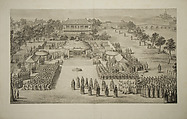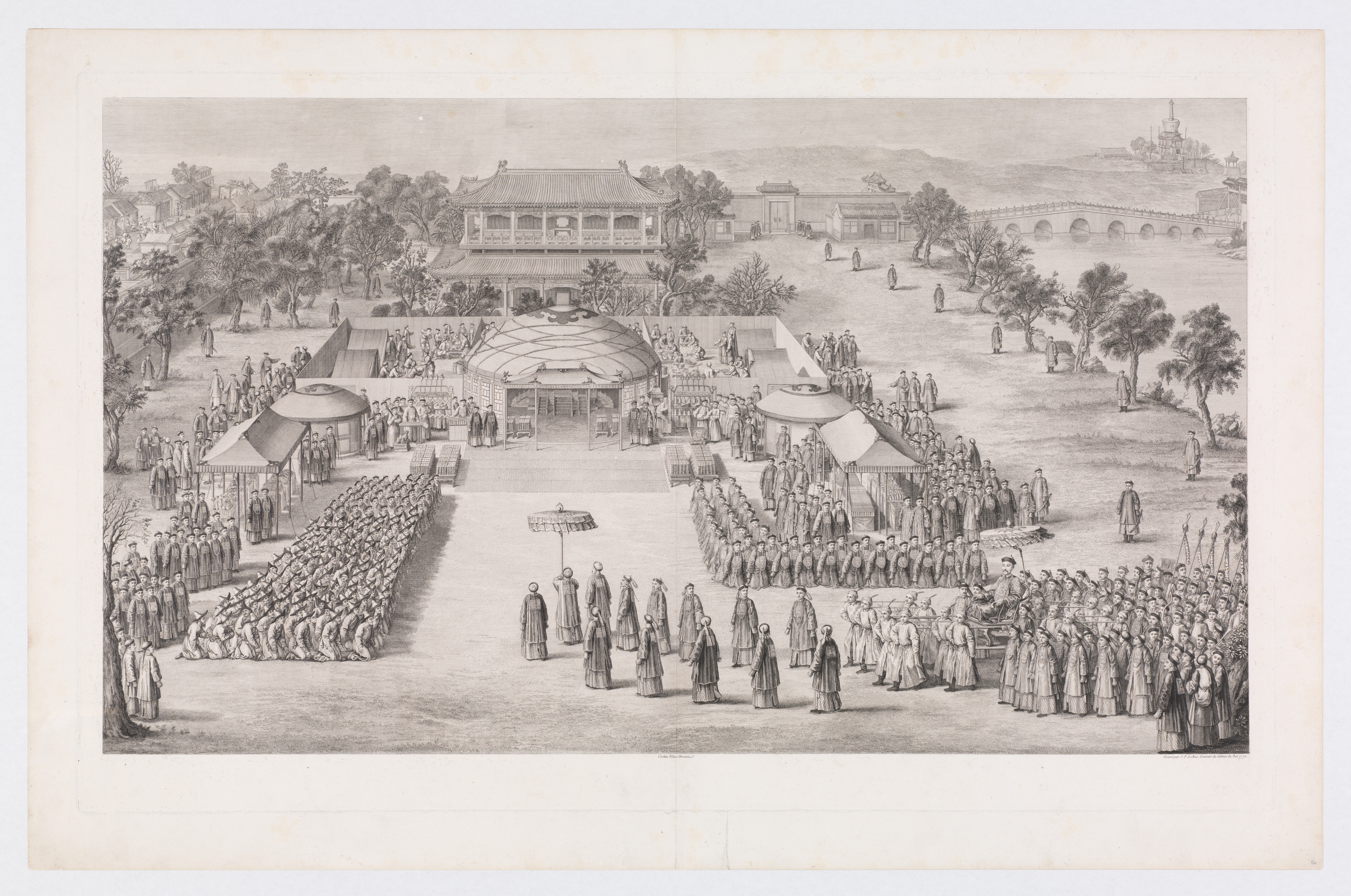The Victory Banquet
Jacques Philippe Le Bas French
after Giuseppe Castiglione Italian
(direxit) Charles Nicolas Cochin II French
Not on view
In 1760, with the successful conclusion of the Central Asian campaign, the emperor celebrated with a grand victory banquet at the Pavilion of Purple Radiance (Ziguangge), a hall located just west of the Forbidden City. He is shown accompanied by officials and imperial bodyguards at right, while vanquished Central Asian tribesmen kneel at left. Bolts of silk and other gifts have been set out on tables to either side of the imperial yurt as tangible rewards for the acceptance of Chinese rule, while servants prepare a meal at the rear of the fenced compound. Visible in the distance are the Marble Bridge and the White Dagoba (Baita), two Beijing landmarks.
As a further reminder of Qing military might, the Pavilion of Purple Radiance housed one hundred full-length portraits of heroes from the Central Asian campaign.
Part of a set of sixteen, "The Victory Banquet" was commissioned by the Qianlong Emperor in 1765 to commemorate Manchu victories (1755-59) over the Eleuths, the Dzungars, and other Central Asian peoples in the present-day region of Xinjiang. Made under the direction of Charles-Nicolas Cochin (1715-1790), the prints, which follow reduced-scale copies of paintings by Jesuit artists working in Beijing, were etched and engraved in France from 1767 to 1774 by the finest printmakers at the court of Louis XV. The Chinese merchants of Canton (present-day Guangzhou) paid for the copper plates and two hundred sets of prints to be delivered to China, with only a few sets retained in Paris.
The prints exemplify the fusion of Eastern and Western representational styles fostered within the Qing imperial painting academy. The European technique of chiaroscuro-the modeling of forms through the use of light and shading-has been visibly tempered, as has the use of one-point perspective. Instead, the scenes present panoramic views and strongly up-tilt ground planes. At the same time, howevery, they reflect European preferences for anatomical accuracy, a single light source, and the mathematically correct reduction of scale to create the illusion of recession.
Due to rights restrictions, this image cannot be enlarged, viewed at full screen, or downloaded.
This artwork is meant to be viewed from right to left. Scroll left to view more.





